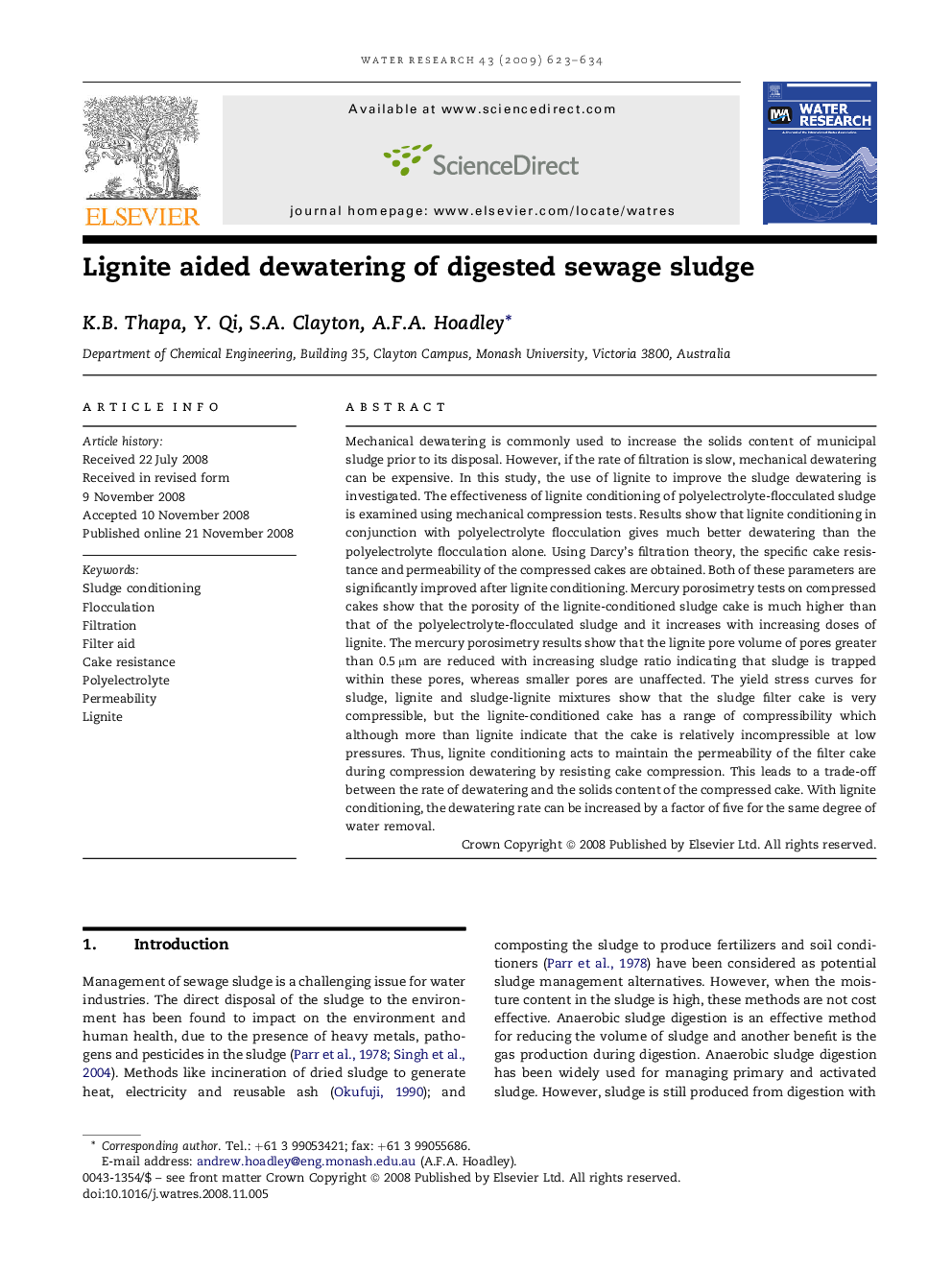| Article ID | Journal | Published Year | Pages | File Type |
|---|---|---|---|---|
| 4485278 | Water Research | 2009 | 12 Pages |
Mechanical dewatering is commonly used to increase the solids content of municipal sludge prior to its disposal. However, if the rate of filtration is slow, mechanical dewatering can be expensive. In this study, the use of lignite to improve the sludge dewatering is investigated. The effectiveness of lignite conditioning of polyelectrolyte-flocculated sludge is examined using mechanical compression tests. Results show that lignite conditioning in conjunction with polyelectrolyte flocculation gives much better dewatering than the polyelectrolyte flocculation alone. Using Darcy's filtration theory, the specific cake resistance and permeability of the compressed cakes are obtained. Both of these parameters are significantly improved after lignite conditioning. Mercury porosimetry tests on compressed cakes show that the porosity of the lignite-conditioned sludge cake is much higher than that of the polyelectrolyte-flocculated sludge and it increases with increasing doses of lignite. The mercury porosimetry results show that the lignite pore volume of pores greater than 0.5 μm are reduced with increasing sludge ratio indicating that sludge is trapped within these pores, whereas smaller pores are unaffected. The yield stress curves for sludge, lignite and sludge-lignite mixtures show that the sludge filter cake is very compressible, but the lignite-conditioned cake has a range of compressibility which although more than lignite indicate that the cake is relatively incompressible at low pressures. Thus, lignite conditioning acts to maintain the permeability of the filter cake during compression dewatering by resisting cake compression. This leads to a trade-off between the rate of dewatering and the solids content of the compressed cake. With lignite conditioning, the dewatering rate can be increased by a factor of five for the same degree of water removal.
